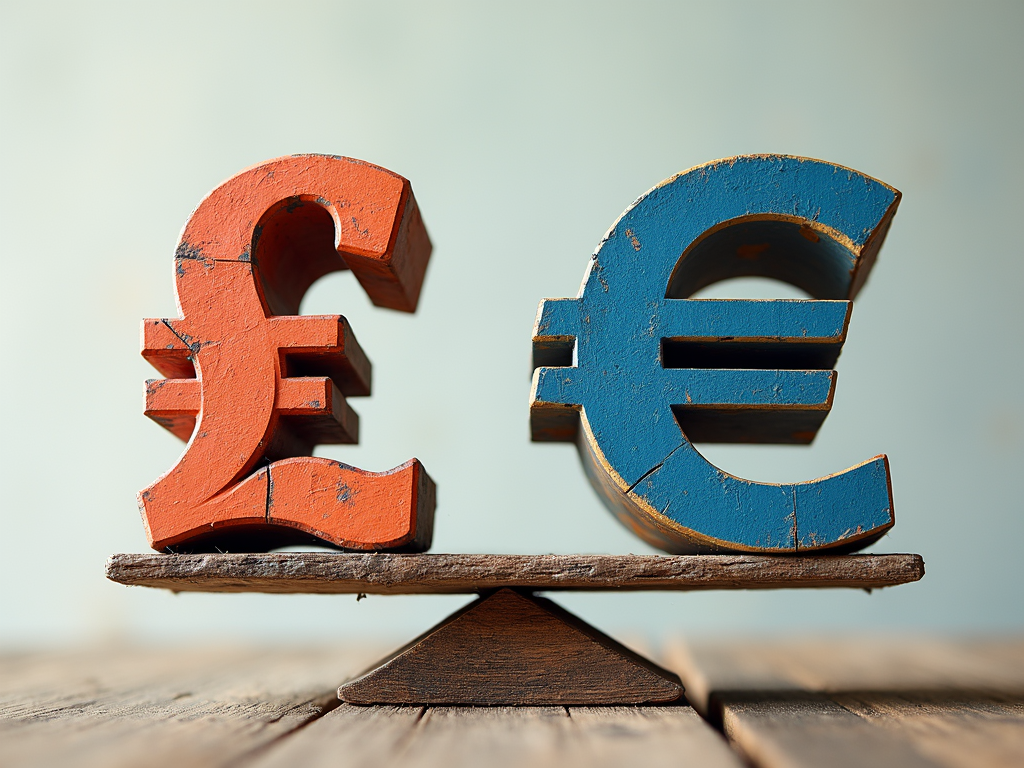The exchange rate between the US dollar and the euro is a fascinating balance influenced by economic and political forces. This dynamic relationship not only affects the markets but also has significant repercussions for international trade. Investors and savers must understand the mechanisms behind these fluctuations to make informed decisions. In this article, we will analyze the factors influencing the exchange rate and evaluate the implications of these fluctuations for international trade.
Dynamics of the Exchange Rate: Forces and Trends at Play Between Euro and US Dollar

The development of the exchange rate between the US dollar and the euro is an impressive intertwining of economic dynamics and political forces. This relationship not only reflects the performance of the American and European economies but also their respective political landscapes. The acute sensitivity to changes in monetary policy and the economic stability of both regions make this interaction a central theme in international financial markets.
Economic factors play a fundamental role. Monetary policy, particularly the interest rate policy of the Federal Reserve (Fed) and the European Central Bank (ECB), is of great importance. Diverging decisions regarding interest rates often lead to capital movements towards higher yields, thereby increasing the demand for US dollars or favoring the euro. Recently, speculation about future rate reductions in both regions has influenced interest differentials and, consequently, the exchange rate. Additionally, the economic growth of both regions directly impacts the exchange rate. Strong economic growth in the US can strengthen the dollar, increasing market confidence. Conversely, a weakening of economic activity in the eurozone can weaken the euro.
Inflation is another critical indicator. Higher inflation rates in the US may prompt the Fed to raise interest rates to keep inflation in check, thereby increasing the dollar’s attractiveness. Conversely, strong economic performance and low inflation in the eurozone can bolster confidence in the euro.
Political factors also significantly influence exchange rates. Geopolitical tensions, such as conflicts or political uncertainties, often enhance the euro’s attractiveness as a safe investment, while uncertainties in the US can weaken the dollar. Changes in customs policies and trade agreements, a common feature in recent years, also contribute to maintaining the delicate balance. Any announcement or proposal for amendments can have immediate effects on the exchange rate.
Currently, the euro has slightly recovered against the US dollar, fueled by positive economic data from the eurozone and political decisions from the ECB. However, this recovery should be interpreted cautiously as volatility in currency markets remains high due to uncertainties in US policy and around the world. In the long term, predicting the exchange rate between the US dollar and the euro remains a complex task based on careful monitoring of economic and political developments in both regions.
Influences of Exchange Rate Fluctuations on Global Trade Structures

The relationship between the US dollar and the euro plays an essential role in international trade, influencing both directly and indirectly the dynamics of their respective exchange rate fluctuations. These fluctuations are more than just numbers on a screen or in an economic report; they have profound implications for the real economy, affecting trade flows, business strategies, and even political decisions.
A central aspect of these interactions is evident in import and export activities between the US and the eurozone. It is particularly clear that a stronger euro increases the costs of European goods for American customers, which can lead to a decrease in demand. Conversely, European exporters benefit significantly when the euro weakens, as their products become more attractive and economical for foreign buyers. This dynamic has direct effects on pricing strategies and margins for European companies, which must operate in an increasingly competitive international market.
Moreover, the competitiveness of European companies is another area significantly influenced by exchange rate movements. A weaker euro gives European products a competitive advantage in global markets due to lower prices. These conditions can provide substantial benefits in sensitive industries like the automotive sector, where price differences can decisively influence market access. However, companies must prepare for increased competition for imports if the euro strengthens, particularly in the domestic market.
Additionally, economic development from a macroeconomic perspective is considerably determined by these exchange rate developments. A stronger euro, which reduces import costs, can provide short-term advantages, but in the long term, it may restrain economic activity by making spending and investment more costly. This conflict impacts the political measures aimed at stabilizing national and regional economic policy through various tools such as interest rates or strategic trade agreements.
Finally, the aforementioned fluctuations in exchange rates lead to changes in trade balances, especially regarding US-EU trade relations. A weakness of the dollar is often associated with a reduction in the trade deficit, as cheaper exports can stimulate international sales. However, in the long term, persistent deficits can further weaken the dollar, affecting the level of international confidence in the US economy.
Overall, companies in Europe and the US should view changes in the exchange rate landscape not just as a risk, but also as an opportunity to make strategic trade and investment decisions that can strengthen their position in the increasingly globalized market. Challenges remain, but those who know how to tackle them may reap significant long-term benefits.